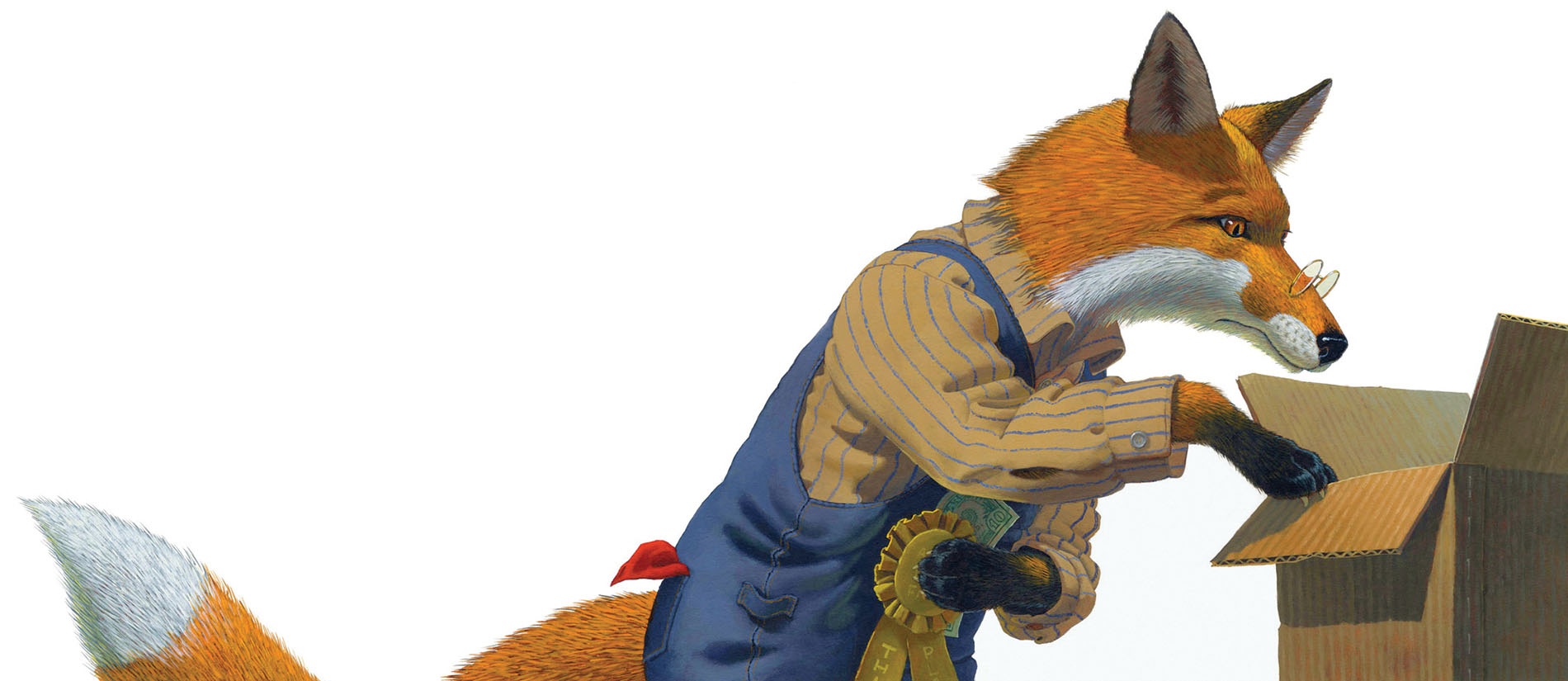Author-illustrator Brian Lies ’85 wasn’t expecting to win Caldecott Honors. Winners usually find out in advance that they’ve been named a runner-up to one of the world’s most prestigious prizes for picture books—the judges call after their all-night deliberation session to share the good news. But Lies hadn’t heard from anyone on that February morning in 2019, so he tuned into the webcast poised to congratulate a fellow illustrator.
Then the announcer called out his name. “I’ve never had a more dissociative moment,” Lies says. Turns out, the judges had phoned him to tell him his book, The Rough Patch, had won—three times in fact. But he’d been at the gym with his notifications turned off.
Lies’s first foray into illustration was at the Brown Daily Herald, where he contributed political cartoons. He’d planned to pursue children’s clinical psychology in college but realized his work for the BDH was the best part of his week. “And it seemed to me that the best part of your week really ought to be your job,” he says.
After graduation, he attended the School of the Museum of Fine Arts in Boston, then began selling illustrations to magazines and newspapers, including the Christian Science Monitor and Boston Globe. But his real dream was picture books—one that was realized after a chance encounter in a Cambridge coffee shop with the art director for children’s books at Houghton Mifflin.
Since that meeting in 1989, Lies has illustrated 19 published picture books and written and illustrated 10 more. His most recent book, Little Bat in Night School—the latest in his New York Times best-selling series of bat books—is out this summer.
He describes the illustration process as akin to storyboarding a film: an establishing shot for new characters; an extreme close-up to focus on their emotional state. “When it’s really working well, every page relies on the page before and after it,” Lies explains. “They should take you through a journey of some sort, whether it’s an emotional journey or an intellectual journey or just pure, blissful adventure.”
In the case of 2018’s The Rough Patch, it’s a moving story of grief and healing. When Evan’s beloved dog dies, he’s inconsolable, destroying his beautiful garden and letting it grow wild. But he can’t help tending to a spreading pumpkin vine, a decision that leads him to the county fair—and a new friend.
“It’s really only in the last maybe 10 books that I actually feel like I’ve hit the kind of storytelling art that I wanted to do all along,” he says. “I feel like very much a late bloomer. But then again, maybe late blooming makes it that much sweeter when we finally achieve.”






